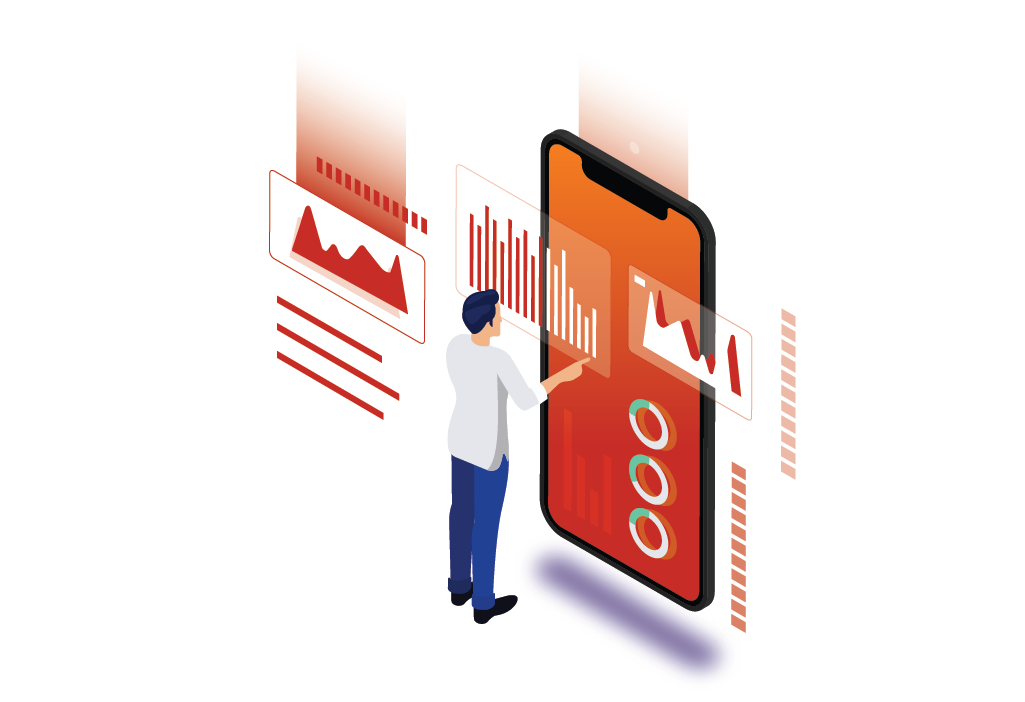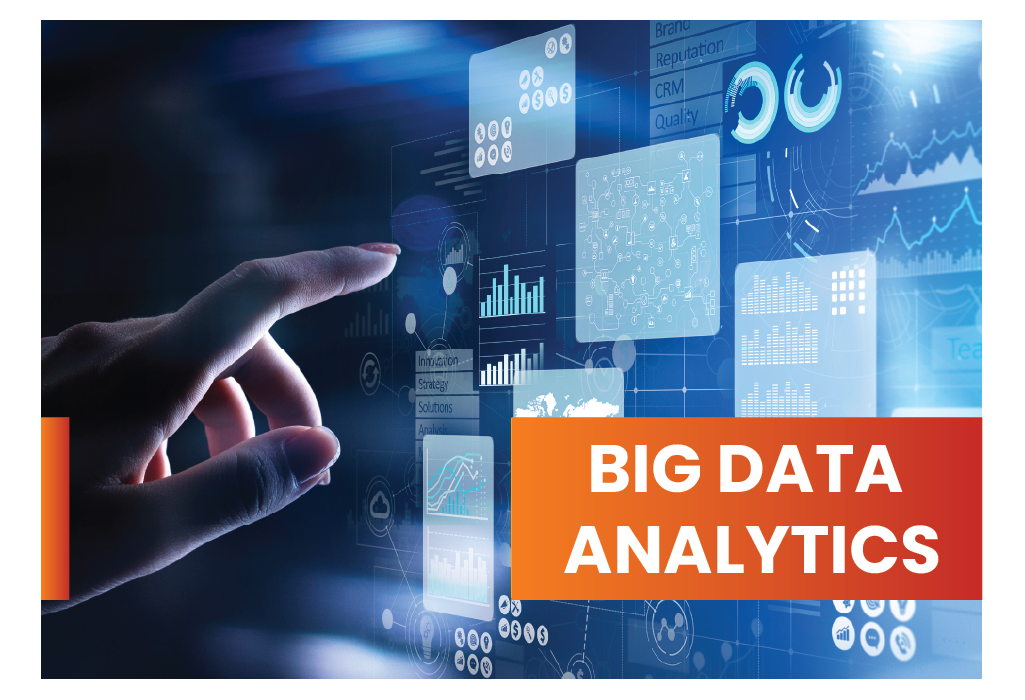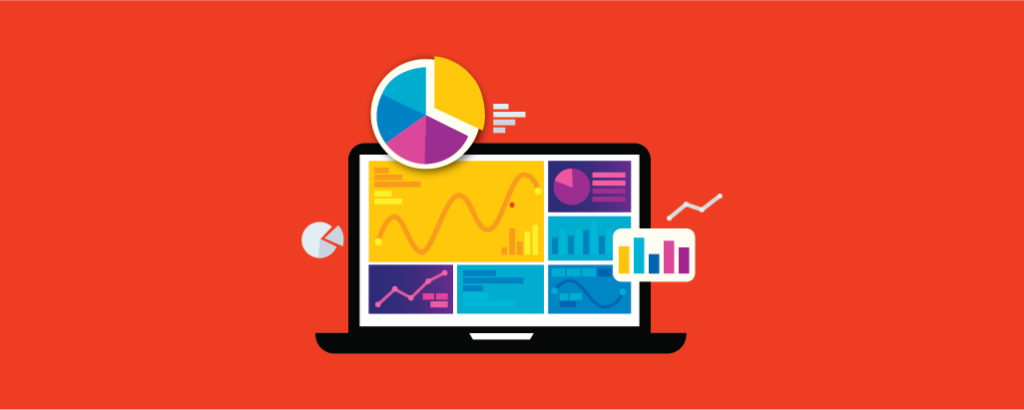Big Data Analytics Tools: Illuminating Insights and In-depth Analysis
Modern Big Data Analytics Tools are fundamental assets in the age of digital transformation because of the exponential growth of cloud computing capabilities and the spike in the volume of Big Data. Organizations from different areas are beginning to comprehend the inherent value of big data analytics and how it can totally change their decision-making methods. Their dynamic utilization of cutting-edge Big Data technologies and procedures has led to a new age of effectiveness and proficiency in their working paradigms.
In light of the rapid advancement of technology, it is a higher priority than ever to track and analyze data. The speed increase of this request underscores the need for organizations to arrange the intricacy of the contemporary market environment effectively. Organizations should have the option to collect, analyze, and transform large amounts of data into usable insights to stay competitive and pertinent. Under the direction of knowledgeable data analysts, this urgent duty is effectively completed by the talented application of the appropriate data analysis technologies.
Organizations should have the option to collect, analyze, and transform large amounts of data into usable insights to stay competitive and pertinent. Under the direction of knowledgeable data analysts, this urgent duty is effectively completed by the talented application of the appropriate data analysis technologies.
A worldview change in how organizations see and use data has been introduced by the blend of expanding Big Data tools for data analysis, cloud computing capabilities, and advanced analytics tools. It is difficult to overestimate the significance of productive data analysis since it powers contemporary company operations. The combination of capable data analysis technologies and knowledgeable experts isn’t just fundamental as we negotiate the complex digital era pathways; it is also the beacon pointing enterprises toward outcomes in a data-centric future.
Decoding Big Data Analytics: Unveiling Its Essence
Modern data-driven decision-making has at its center a progressive and dynamic process called big data analytics. It involves the calculated investigation, analysis, and extraction of huge bits of insights from colossal and muddled datasets that conventional data processing techniques find challenging to manage. This technique explores the universe of high-volume, high-velocity, and high-variety data sources, sometimes known as the three V’s of big data, and goes beyond ordinary data analysis. Tools of big data analytics attempt to uncover patterns, relationships, trends, and other significant data concealed inside these enormous data sets by utilizing complex tools, algorithms, and technologies.  Data mining, machine learning, predictive modeling, and natural language processing are only a couple of the techniques it includes.
Data mining, machine learning, predictive modeling, and natural language processing are only a couple of the techniques it includes.
Businesses and organizations might go with educated choices, spot untapped possibilities, smooth out processes, and further develop customer experiences by transforming raw data into actionable insights. Tools used in big data analytics fundamentally affect different industries, including advertising, medical services, and finance. Big data analytics enables businesses to get data from both organized and unstructured data sources, including social media, sensor data, and transaction records, assisting them with staying ahead of the curve in a fast-changing digital environment. Big data analytics is as yet a significant tool for releasing the revolutionary potential of data and encouraging innovation, even as technological developments continue impacting the generation and utilization of data.
Avowing the Titans: The Most Popular Tools for Big Data Analytics
Big data analytics is a unique field that is continuously evolving. It is furnished with a large number of cutting-edge tools for mining colossal data sets for quick data. Several unique tools have arisen as pioneers in this perplexing industry, showing their notoriety and significant effect on big data analytics. With the assistance of these cutting-edge technologies, organizations can now effectively cross the intricacy of data analysis and take advantage of its progressive potential for key development and well-informed decision-making. Following are some of the top big data analytics tools and technology used by several organizations.
Apache Hadoop:
Apache Hadoop, a foundation of the big data revolution laid out by Hadoop, changed how organizations handle and analyze data. For viable storage and processing, its Hadoop Distributed File System (HDFS) isolates data into smaller pieces and scatters them over a cluster of computers. Businesses might deal with gigantic amounts of data in parallel using Hadoop’s MapReduce architecture, acquiring insights from both organized and unstructured sources. Hadoop is now generally utilized for batch processing because of its versatile open-source design, making it an urgent tool for organizations managing a lot of data.
Apache Spark:
Especially in the fields of analytics and real-time data processing, Apache Spark has demonstrated to be a unique advantage. When contrasted with conventional disk-based methods, its in-memory processing abilities emphatically speed calculations. Spark’s adaptability envelops intuitive questions, streaming analytics, and AI activities in addition to batch processing. It is utilized by a wide range of data professionals because of its intuitive APIs and interoperability with languages like Python, Java, and Scala. Spark covers confounded analytics situations and helps agile decision-making by empowering organizations to analyze data as it comes in.
Python:
Python’s prominence in the field of data analytics is being pushed by its lucidness, simplicity, and extensive ecosystem of libraries. Data scientists use libraries like Pandas for manipulating data, NumPy for doing mathematical calculations, and Matplotlib for displaying data. Python is a coherent decision for exploratory data analysis, statistical modeling, and hypothesis testing due to its simplicity of utilization. Furthermore, it permits data scientists to make prescient models through the reconciliation of AI libraries, empowering organizations to track down trends, patterns, and correlations in their data.
Cassandra:
Large data volumes across scattered and fault-tolerant clusters are where Cassandra succeeds. Cassandra is a NoSQL database that is equipped for dealing with dynamic and creating datasets because of its adaptability in obliging various data kinds and formats. It is especially appropriate for high-velocity data situations including sensor data, social media interactions, and IoT applications because of its distributed design, which ensures high accessibility, smooth versatility, and adaptation to fault tolerance. Organizations can without much of a stretch assemble, store, and break down ongoing data streams.
Qubole:
Qubole gives a cloud-local information stage that makes complex data handling and analytics in the cloud more obvious. Qubole gives adaptable and versatile analytics, streamlining resource distribution for minimal expense operations on account of easy connection with key cloud providers. By overcoming any barrier between data engineers, data scientists, and analysts, its single point of interaction empowers data teams to investigate and analyze data agreeably. Qubole diminishes operational expenses and revives time to insight by automating various data handling processes.
Apache Storm:
Apache Storm fulfills the interest for real-time stream processing, which analyzes data as it streams and empowers organizations to respond rapidly to evolving circumstances. Low-latency analytics are ensured by Storm’s parallel processing design, which makes it proper for use cases like fraud detection, monitoring, and alerting. The trustworthiness and versatility required for handling persistent data streams are given by its fault tolerance and ability to deal with data over a distributed cluster of computers. Organizations are engaged by Apache Storm to exploit continuous bits of real-time insights from data-in-motion, enabling swift and well-informed decision-making.
The Significance of Big Data Analytics: Unveiling Its Importance
Due to its vital job in working with informed direction-making and uncovering useful insights from the continually developing volume and variety of data, big data analytics is of the most extreme pertinence in the cutting-edge environment. This changed importance results from its capacity to change the company strategy, improve various components of modern life, and upgrade operations. Big data analytics reveals hidden patterns, connections, and trends that conventional methodologies might miss by intently examining colossal datasets. Subsequently, firms are better equipped to anticipate the future, spot new market drifts, and adjust their product lines in response to changing customer needs. Big data insights enable academics, scientists, and engineers to foster cutting-edge solutions and push the wildernesses of innovation.
This changed importance results from its capacity to change the company strategy, improve various components of modern life, and upgrade operations. Big data analytics reveals hidden patterns, connections, and trends that conventional methodologies might miss by intently examining colossal datasets. Subsequently, firms are better equipped to anticipate the future, spot new market drifts, and adjust their product lines in response to changing customer needs. Big data insights enable academics, scientists, and engineers to foster cutting-edge solutions and push the wildernesses of innovation.
Analytic processes and tools in big data also promote unparalleled degrees of functional productivity by providing organizations with a careful insight of their procedures. Businesses might work on processes, cut expenses, and more wisely deploy resources by identifying inefficiencies or opportunities for improvement. Big data analytics improves patient care in the healthcare industry through customized treatments and predictive diagnoses. Like this, it reinforces risk management techniques and distinguishes anomalies progressively in enterprises like banking and cybersecurity.
Big data analytics also acts as an innovation driver. By giving the gigantic datasets important to training these systems, it advances the development of cutting-edge technologies like artificial intelligence and machine learning.
Rejoice with Pattem Digital: Your Choice for Big Data Excellence
As we come to the end of our exploration of the universe of Big Data Analytics Tools, it becomes clear that the effectiveness of these tools is just a single part of the whole. Expert data analysts who utilize these strategies to make sense from unstructured data are the real catalysts. The mixing of technology complexity with human expertise makes groundbreaking insights, permitting organizations to stay adaptable, make wise decisions, and forge a successful future. A new age of plentiful data that is also accessible and reasonable has shown up because of the mix of growing Big Data quantities with the power of cloud computing. Organizations can decipher patterns, spot trends, and uncover the hidden jewels in their data stashes by utilizing advanced analytics technologies.
In the field of Big Data services, Pattem Digital is a trailblazer. We have the skill to outfit the force of these cutting-edge technologies, transforming them into precise instruments that release the maximum capacity of your data. Each project we work on is a demonstration of our dedication to assisting you in acquiring significant insights and propelling your organization. Let us be your beacon of light as you explore and prevail in the field of big data analytics in a world overflowing with data.


